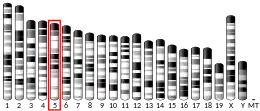| GALNT17 | |||||||||||||||||||||||||||||||||||||||||||||||||||
|---|---|---|---|---|---|---|---|---|---|---|---|---|---|---|---|---|---|---|---|---|---|---|---|---|---|---|---|---|---|---|---|---|---|---|---|---|---|---|---|---|---|---|---|---|---|---|---|---|---|---|---|
| Identifiers | |||||||||||||||||||||||||||||||||||||||||||||||||||
| Aliases | GALNT17, GALNACT17, GALNT16, GALNT20, GALNTL3, GalNAc-T5L, WBSCR17, Williams-Beuren syndrome chromosome region 17, polypeptide N-acetylgalactosaminyltransferase 17, GalNAc-T17, GalNAc-T19 | ||||||||||||||||||||||||||||||||||||||||||||||||||
| External IDs | OMIM: 615137 MGI: 2137594 HomoloGene: 49707 GeneCards: GALNT17 | ||||||||||||||||||||||||||||||||||||||||||||||||||
| |||||||||||||||||||||||||||||||||||||||||||||||||||
| |||||||||||||||||||||||||||||||||||||||||||||||||||
| |||||||||||||||||||||||||||||||||||||||||||||||||||
| |||||||||||||||||||||||||||||||||||||||||||||||||||
| |||||||||||||||||||||||||||||||||||||||||||||||||||
| Wikidata | |||||||||||||||||||||||||||||||||||||||||||||||||||
| |||||||||||||||||||||||||||||||||||||||||||||||||||
Putative polypeptide N-acetylgalactosaminyltransferase-like protein 3 is an enzyme that in humans is encoded by the WBSCR17 gene.[5][6][7]
This gene encodes an N-acetylgalactosaminyltransferase, which has 97% sequence identity to the mouse protein. This gene is deleted in Williams syndrome, a multisystem developmental disorder caused by the deletion of contiguous genes at 7q11.23.[7]
References
- 1 2 3 GRCh38: Ensembl release 89: ENSG00000185274 - Ensembl, May 2017
- 1 2 3 GRCm38: Ensembl release 89: ENSMUSG00000034040 - Ensembl, May 2017
- ↑ "Human PubMed Reference:". National Center for Biotechnology Information, U.S. National Library of Medicine.
- ↑ "Mouse PubMed Reference:". National Center for Biotechnology Information, U.S. National Library of Medicine.
- ↑ Merla G, Ucla C, Guipponi M, Reymond A (Jun 2002). "Identification of additional transcripts in the Williams-Beuren syndrome critical region". Hum Genet. 110 (5): 429–38. doi:10.1007/s00439-002-0710-x. PMID 12073013. S2CID 29964959.
- ↑ Nakamura N, Toba S, Hirai M, Morishita S, Mikami T, Konishi M, Itoh N, Kurosaka A (Mar 2005). "Cloning and expression of a brain-specific putative UDP-GalNAc: polypeptide N-acetylgalactosaminyltransferase gene". Biological and Pharmaceutical Bulletin. 28 (3): 429–33. doi:10.1248/bpb.28.429. PMID 15744064.
- 1 2 "Entrez Gene: WBSCR17 Williams-Beuren syndrome chromosome region 17".
Further reading
- Gerhard DS, Wagner L, Feingold EA, et al. (2004). "The status, quality, and expansion of the NIH full-length cDNA project: the Mammalian Gene Collection (MGC)". Genome Res. 14 (10B): 2121–7. doi:10.1101/gr.2596504. PMC 528928. PMID 15489334.
- Ota T, Suzuki Y, Nishikawa T, et al. (2004). "Complete sequencing and characterization of 21,243 full-length human cDNAs". Nat. Genet. 36 (1): 40–5. doi:10.1038/ng1285. PMID 14702039.
- Scherer SW, Cheung J, MacDonald JR, et al. (2003). "Human chromosome 7: DNA sequence and biology". Science. 300 (5620): 767–72. Bibcode:2003Sci...300..767S. doi:10.1126/science.1083423. PMC 2882961. PMID 12690205.
- Strausberg RL, Feingold EA, Grouse LH, et al. (2003). "Generation and initial analysis of more than 15,000 full-length human and mouse cDNA sequences". Proc. Natl. Acad. Sci. U.S.A. 99 (26): 16899–903. Bibcode:2002PNAS...9916899M. doi:10.1073/pnas.242603899. PMC 139241. PMID 12477932.
- Valero MC, de Luis O, Cruces J, Pérez Jurado LA (2001). "Fine-scale comparative mapping of the human 7q11.23 region and the orthologous region on mouse chromosome 5G: the low-copy repeats that flank the Williams-Beuren syndrome deletion arose at breakpoint sites of an evolutionary inversion(s)". Genomics. 69 (1): 1–13. doi:10.1006/geno.2000.6312. PMID 11013070.
- Adams MD, Kerlavage AR, Fleischmann RD, et al. (1995). "Initial assessment of human gene diversity and expression patterns based upon 83 million nucleotides of cDNA sequence" (PDF). Nature. 377 (6547 Suppl): 3–174. PMID 7566098.
This article is issued from Wikipedia. The text is licensed under Creative Commons - Attribution - Sharealike. Additional terms may apply for the media files.



